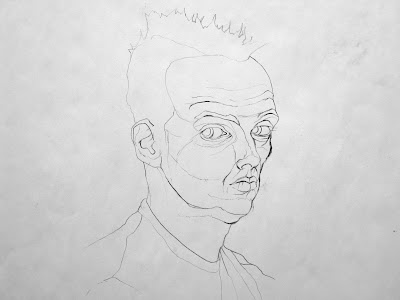Alfred Leslie
In high school Alfred Leslie was interested in body building and won an annual competition when he was eighteen, earning the title "Mr. Bronx." He also had precocious talent for drawing, and he planned on being a professional artist. After serving in the United States Coast Guard in 1945-1946, Leslie studied briefly at the Art Students League, where he was also a model. Between 1947 and 1949 he enrolled at New York University--for one year, nine months, and sixteen days, the maximum provided for by his GI Bill--studying with Tony Smith.
To support himself during the early years of his career, Leslie worked as a house painter, carpenter, truck driver, and in light manufacturing. During these same years he experimented with filmmaking: The Eagle and the Foetus (1945-1947); Directions: A Walk after the War Games (1946-1949); Pull My Daisy, in collaboration with Robert Frank, Jack Kerouac, and others (1959); and The Last Clean Shirt, a collaboration with Frank O'Hara (1963). Leslie also wrote songs, designed stage sets for several theater groups, and in 1959 edited and published the literary magazine, The Hasty Papers.
In the 1950s Leslie explored abstract expressionism and--having captured the attention of critic Clement Greenberg, who had included him in his New Talent exhibition at the Kootz Gallery (1949)--rapidly earned a place among the best of the second generation abstract expressionist painters. Leslie never completely abandoned realism, however, and during the early 1960s he turned away from abstraction to create a narrative art, depicting everyday people, places, and events in a heroic manner, with dramatic lighting that has been likened to stage lighting and to the paintings of Carravaggio. In 1966 Leslie's studio in New York was destroyed in a fire that tragically claimed the lives of twelve fire fighters. Most of his work of the previous years was lost.
Prior to his work in etching at Graphicstudio, Leslie had worked in lithography at Landfall Press, Chicago. He has been a visiting artist at Amherst College and Youngstown State University in Ohio. He has received numerous grants for both painting and filmmaking, including a grant from the Guttman Foundation for Avant-Garde Film (1962). [source]






















%20-drawing_detail1494.jpg)
Comments